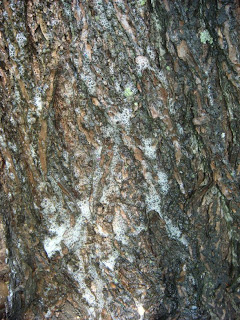Animals in Winter: Deer
Winter is a season of rest for a lot of Vermont’s wildlife
population, but not every animal goes into hibernation for the season. Like
humans, many animals see the colder months as a time to seek warmth and shelter.
These animals brave the Vermont winter by preparing in advance and adapting
their lifestyle.
You have probably spotted deer in the woods or sprinting across the road during
the winter months. Deer remain active all year long, but have to make
adjustments in order to keep warm when cold weather hits. They move from fall
habitats to wintering areas as the season changes. Wintering areas can range in
size from a few acres to over a hundred and can be used for several generations
as long as the habitat stays intact. If development occurs near their wintering
habitat, deer will migrate elsewhere. Wintering areas have dense softwood cover, which protects the animal from
wind and falling snow.
 |
| Deer wintering area. Photo courtesy of VT Fish & Wildlife |


.jpg)
.jpg)
Comments
Post a Comment
Feel free to let us know what you think.